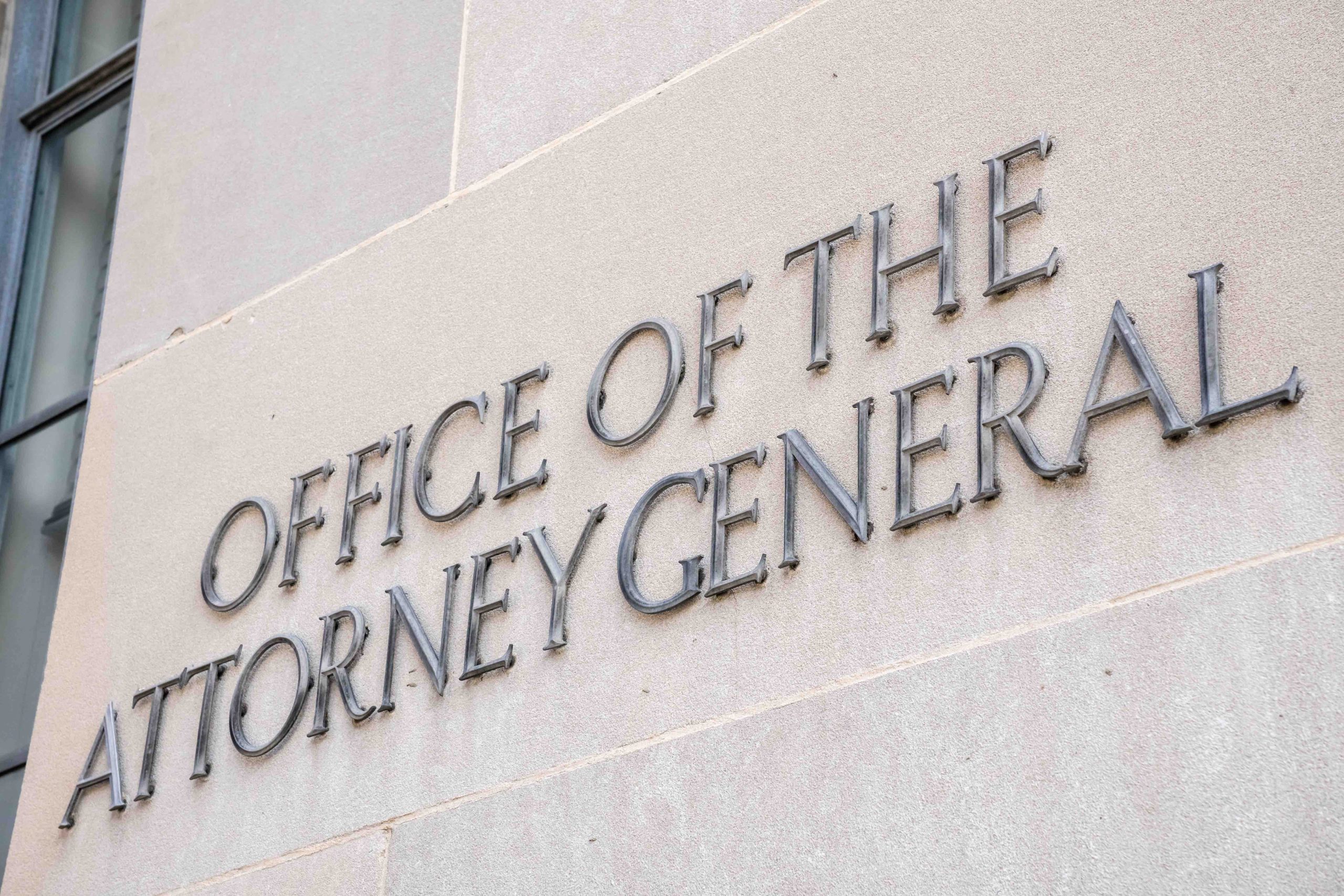Pair of immigration cases come to the court on key issue in some deportation proceedings
CASE PREVIEW
on Apr 14, 2023
at 9:41 am
The government argues that the attorney general has the power to resolve any ambiguities in the Immigration and Nationality Act. (Heidi Besen via Shutterstock)
In 1948, Justice William O. Douglas wrote in a majority opinion that the deportation of noncitizens was “a drastic measure and at times the equivalent of banishment or exile.” On Monday, the court will hear argument in a pair of cases, Pugin v. Garland and Garland v. Cordero-Garcia, involving whether a federal law that allows the government to deport noncitizens convicted of “an offense relating to obstruction of justice” applies even to cases that are not connected to open investigations or judicial proceedings.
Congress extended the Immigration and Nationality Act, which regulates immigration into the United States, in 1988 to give immigration enforcement authorities, now the Department of Homeland Security, the power to automatically deport noncitizens convicted of an “aggravated felony” at the state or federal level. While aggravated felonies were initially limited to a few serious crimes, Congress has expanded the list to encompass a broader array of criminal activity, including – in 1996 – “offenses relating to the obstruction of justice.”
The Supreme Court has held that the federal crime of obstruction of justice requires “interference with a pending or ongoing proceeding to administer justice.” However, the Board of Immigration Appeals, the administrative body within the Department of Justice that reviews decisions by immigration judges, has recently stated that “interference with an investigation or proceeding that is reasonably foreseeable” by the defendant is enough to qualify as an offense relating to obstruction of justice for purposes of the INA.
Jean Francois Pugin has been living in the United States since 1985, when he came to the country as a legal permanent resident. In 2014, Pugin pleaded guilty in Virginia to being an accessory after the fact to a felony. He was sentenced to 12 months in prison, although he was only required to serve three months. Pugin received a notice to appear in immigration court for removal proceedings on the ground that he had been convicted of “an offense relating to the obstruction of justice.” An immigration judge agreed and ordered Pugin removed.
Fernando Cordero-Garcia has been living in the United States since 1965, when he entered as a legal permanent resident. In 2009, he was convicted in California of two counts related to sexual battery and sexual exploitation arising from the sexual assaults of patients he treated as a psychologist for Santa Barbara County, California, and two counts of dissuading, or attempting to dissuade, a witness from reporting a crime. Cordero-Garcia was sentenced to two years in prison on the witness-dissuasion counts. He then received a notice to appear in immigration court for removal proceedings. An immigration judge ordered him removed, on the ground that his conviction for discouraging a witness constituted an offense relating to the obstruction of justice.
The BIA rejected both men’s appeals. It pointed to its decision that, for the purposes of the INA’s aggravated felony provision, an offense relating to obstruction of justice need only contemplate a proceeding that was reasonably foreseeable by the defendant.
Pugin and Cordero-Garcia appealed the BIA’s decisions to two different courts of appeals, which reached two different results. In Pugin’s case the U.S. Court of Appeals for the 4th Circuit upheld the BIA’s decision and definition of an offense relating to the obstruction of justice. But the U.S. Court of Appeals for the 9th Circuit sided with Cordero-Garcia, rejecting the BIA’s decision and concluding that such an offense must have a connection to a pending proceeding or investigation. The 9th Circuit emphasized that the BIA’s interpretation of the statute “raises grave doubts about whether INA is unconstitutionally vague.”
Although Congress did not define “an offense relating to obstruction of justice” in the INA, Pugin and Cordero-Garcia argue that the phrase “obstruction of justice” has a long-established legal meaning. The statute therefore unambiguously requires a nexus to a pending or ongoing investigation or proceeding because that is how the federal crime of obstruction of justice was interpreted twice by the court before the offense was added to the aggravated felony list in 1996. Indeed, Pugin and Cordero-Garcia note, Congress was well aware of this interpretation, because the court decided one of those cases in 1995 – just one year before Congress added the offense to the list. They urge the justices to stop there to avoid “a maximally severe approach” to interpreting a statute with criminal and removal consequences. “The government’s reading of ‘relating to,’” they warn, “has no meaningful limit.”
The government counters that although the ordinary meaning of “obstruction of justice” requires some connection to “the process of justice,” it does not require “temporal overlap.” A wide array of sources demonstrates that the statute is ambiguous, the government says, including state statutes on the books in 1996 that criminalized similar conduct without requiring a nexus to a pending proceeding; the Merriam-Webster Dictionary of Law, which references “the crime or act of interfering with the process of justice and law” broadly and includes the possibility of interference with a “potential witness;” and the Model Penal Code, which does not limit obstruction of justice to interference with a pending or ongoing proceeding.
However, Pugin and Cordero-Garcia push back against this everything-but-the-kitchen-sink approach. They point out that the government does not limit its statutory construction argument to state laws defining obstruction of justice. Moreover, they write other law dictionaries require a nexus to an ongoing or pending proceeding and the Model Penal Code is not any state’s law but rather a law reform project that states may choose to selectively adopt.
Under the doctrine known as Chevron deference, the court should generally defer to an administrative agency’s interpretation of an ambiguous statute as long as that interpretation is reasonable. Pugin initially asked the justices to also consider, if the phrase “offense relating to obstruction of justice” is ambiguous, whether the court should defer to the BIA’s interpretation. The justices rejected this second question, seemingly sidestepping the Chevron deference issue for now.
Pugin and Cordero-Garcia argue that if the court does find the statute ambiguous, the rule of lenity should apply here instead of Chevron deference. The rule of lenity is a canon of statutory construction applied to criminal and deportation statutes that resolves ambiguity in the statute in favor of the defendant or noncitizen. The purpose of the rule is to ensure that criminal statutes are sufficiently clear to provide fair notice of proscribed conduct and to give noncitizens some protection when confronting unclear statutes authorizing deportation. Any ambiguities in the statute, they argue, should be construed in their favor because, pursuant to the rule of lenity, the court applies the narrowest possible meaning to statutes which result in deportation of a noncitizen. The rule of lenity for criminal statutes should also apply, they say, because the interpretation of “obstruction of justice” as an aggravated felony under the INA can determine criminal liability and exposure in addition to immigration consequences.
The government argues that because the statute is clear, no deference to the BIA is necessary. However, the government continues, if there are any ambiguities, they should not be resolved using lenity canons. Congress made clear in the statute, the government says, that the attorney general has the power to resolve any ambiguities in the INA.
Once the court determines how “obstruction of justice” should be interpreted, the cases will return to the immigration judges to decide whether the convictions match that definition. Whether the offense requires a nexus to a pending or ongoing investigation or proceeding will mean the difference for at least Pugin, who has no other convictions, of whether he can stay in the country he’s lived in for over 38 years.






